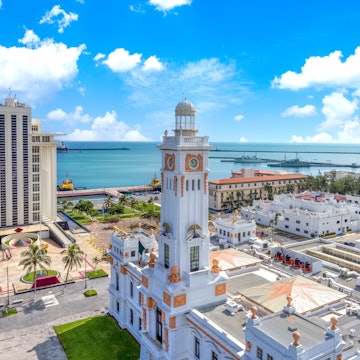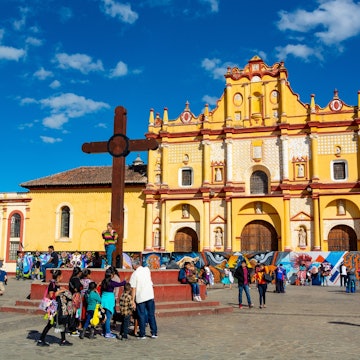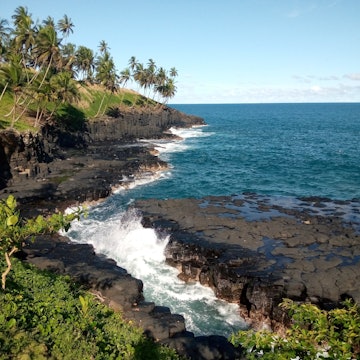

Plan a trip to Africa with these incredible experiences. zevana/Shutterstock
Africa offers experiences found nowhere else on Earth. Each year, the Great Migration sees millions of mammals traverse Tanzania and Kenya in one of nature's greatest spectacles, and you can witness it up close on a safari tour. But the continent extends far beyond its wildlife. Sail the Nile on elegant cruise ships, explore South Africa's scenic Garden Route or trek Morocco's mountains and ancient medinas.
Here are seven journeys from our new book, Dream Trips of the World that showcase the range of adventures you can enjoy across this vast continent.
1. Sail down the Nile in Egypt
All the historical romance and melancholy of ancient Egypt can be found on a journey down the Nile. Adventure here can take several forms – be it on the deck of a white-sailed felucca, the traditional Egyptian sailing pontoon, or on board a more elaborate cruise ship equipped with swimming pool and on-call Egyptologists ready to unpick every riddle and notoriously difficult hieroglyphs. The 56-cabin cruiser MS Mayflower offers well-priced itineraries but if you're looking for 1920s-style glamour, try the Sanctuary Sunboat IV Luxury Cruise.
Once on your boat, spend a couple of days sailing slowly north, with desert towns. At Kom Ombo, learn about the ancient Egyptian calendar and the early days of medicine (even the pharaohs went in for cosmetic surgery), before rural life takes over by the time you reach Edfu, home to the great Temple of Horus. When stopping at Luxor, see Karnak, the most storied temple of the lot, and the Valley of the Kings.
Pro tip: The gateway for northbound Nile trips is Aswan, well-connected to main hubs Cairo and Luxor by air, rail and road. Then it’s onto your desert ship – there’s no need to sail all the way to Cairo, as most operators only cover the stretch between Aswan and Luxor.
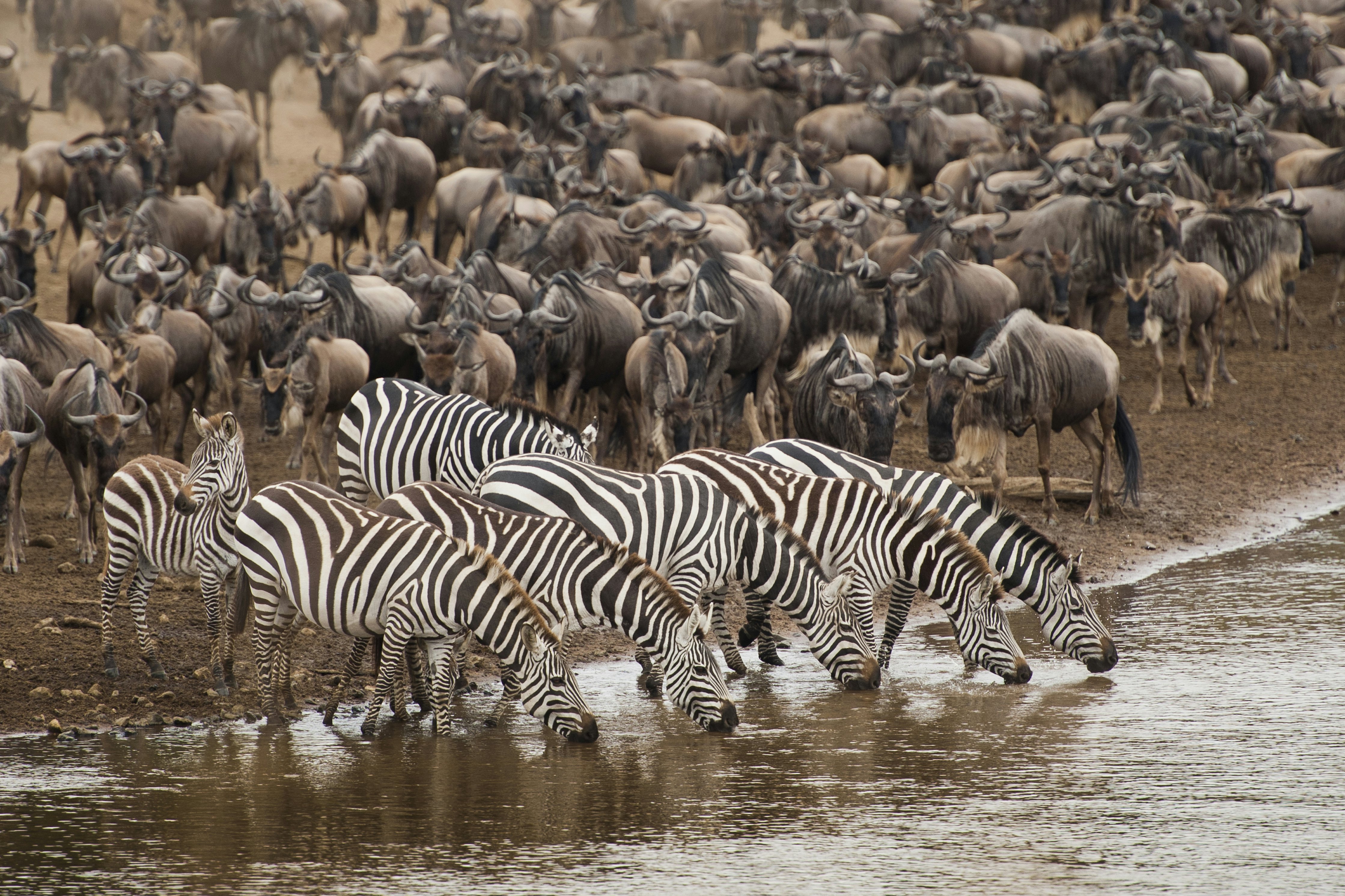
2. Follow the herds on the Great Migration in Kenya and Tanzania
The Great Migration on the savannah plains of Tanzania’s Serengeti and Kenya’s Masai Mara is one of nature’s last, truly wild spectacles. Following instincts honed over millennia, the herds of nearly two million wildebeest and zebra, seemingly moving as one, follow the rains and grasslands on their endless quest for survival, stalked all the while by predators. Following this quest and this contest is a journey into the storied nostalgia of the East African safari. Sleep under canvas and listen to lions roaring in the night. Sip G&Ts as elephant families move like cloud shadows across the landscape. Then watch in wonder as the sun sets in a great ball of fire behind a silhouetted acacia.
Pro tip: The best time to witness the Great Migration is between April and October, though different stages can be experienced throughout the year. Book your safari months in advance regardless of when you plan to go.

3. Visit Cape Town and drive the Garden Route, South Africa
A stay in Cape Town pairs naturally with a visit to the nearby winelands. On a longer visit, take a scenic road trip along the famous Garden Route, a drive that starts in Mossel Bay, 380km (236 miles) east of Cape Town and continues east. Explore a strip of beaches, lagoons and forests around the town of Knysna. The region's mild climate means year-round adventures like the Tsitsikamma Canopy Tour, Storms River Suspension Bridge walks, and gorge exploration by kayak and lilo.
After taking in the Garden Route’s many delights, most visitors zip back to the city along the N2, but crossing the Outeniqua Pass to the ostrich-farming Oudtshoorn area offers a slower return through the semi-arid Little Karoo, where fruit orchards and vineyards unfurl between the Swartberg and Langeberg Mountains. Follow Rte 62 west to Montagu, stopping for farm-stall dried peaches along the way, before ending your journey at a peaceful farmstay under starlit skies.
Pro tip: In Cape Town, visit the Old Biscuit Mill in arty Woodstock for local craftwork and homewares, as well as the Neighbourgoods food and design market on weekends.

4. Trek mountains and explore medinas in Morocco
The Aït Bougmez Valley in Morocco's High Atlas is a world away from the chaos and bustle of Marrakesh's souqs reached by a half-day drive or two-day journey via Azilal on public or shared transport. Here, traditional rural life melds with trekking trails, including the three-day traverse of the M'Goun massif to Aït Ali N'Ito. Explore Tabant's Sunday souq, experience village life, or hike to seasonal Lac Izoughar on the valley's eastern edge. The 57km (35-mile) M'Goun Traverse can be split over three days, with a final night at Aït Ali N'Ito, or continue directly to the village of Imlil – either a half-day drive or two-day journey via Demnate and Marrakesh on public transport.
After a rest day in Imlil, set out on the seven-day Toubkal Circuit – a 79km (49-mile) loop that winds past the thundering Cascades d'Irhoulidene and the stone houses of Azib Tamsoult hamlet. Finally, make the short drive back to Marrakesh to trade in your backpack for a shopping bag and dive into the chaos of the medina and souqs. After a few days bargaining on the Djemaa El Fna by day and soaking in historic hammams by night, it’ll already be time for the next adventure.
Pro tip: While officially mandatory only for treks in the Toubkal region, seeing the High Atlas with a local guide will facilitate a deeper cultural experience, particularly in the villages where Amazigh languages are spoken.

5. Take a boat safari through the Okavango in Botswana
Drift gondola-style through the watery channels of Botswana’s UNESCO World Heritage-listed Okavango Delta, one of Africa’s largest concentrations of wildlife, in a wooden dugout canoe. While you move at the whim of quiet currents, steering clear of hippos, you might encounter an elephant swimming or drinking quietly by the reeds. Birds known as skimmers make the barest ripple as they pluck insects from the surface. If you’re lucky, you’ll hear a lion roaring off in the distance.
So magical are such moments that here in the world’s largest inland delta, you could be forgiven for wondering if you’ve found Eden. And at the end of your watery adventure, you’ll return to where you began, to a cluster of safari tents on an island accessible only by boat.
Pro tip: Plan to visit from May to September when water levels are ideal for boat safaris. Book your safari through Safari Bookings.

6. Cruise between the islands of Cabo Verde
Every island is a world unto its own in Cabo Verde. On Fogo, signs of the island’s active volcano are everywhere: on black-sand beaches, in lava fields surrounding abandoned villages and in the farmlands where the rich soil nurtures the archipelago’s best vineyards. Boa Vista, by contrast, resembles a strange collision of Sahara and Caribbean – a parched interior, home to the wind-whipped dunes of the Viana Desert, and golden beaches lapped by turquoise seas. Once you’ve set foot on its soft sands you’ll agree that Praia de Santa Mónica ranks among the world’s most beautiful beaches.
Though formed by the same volcanic forces, the island of Santo Antão feels far removed from Boa Vista’s sunbaked flatlands, with craggy peaks rising above lush canyons and meandering river valleys. Trekking here is epic, with challenging hikes amid waterfalls, hillside villages and dramatic viewpoints. Cabo Verde’s other inhabited islands (nine in all) are sprinkled with equally diverse landscapes – along with enchanting music-filled cities like Mindelo, adding another reason to make this trip.
Pro tip: Various ferry companies, including CV Interilhas, connect neighboring islands – and, less frequently, distant islands. BestFly Cabo Verde flies between islands.
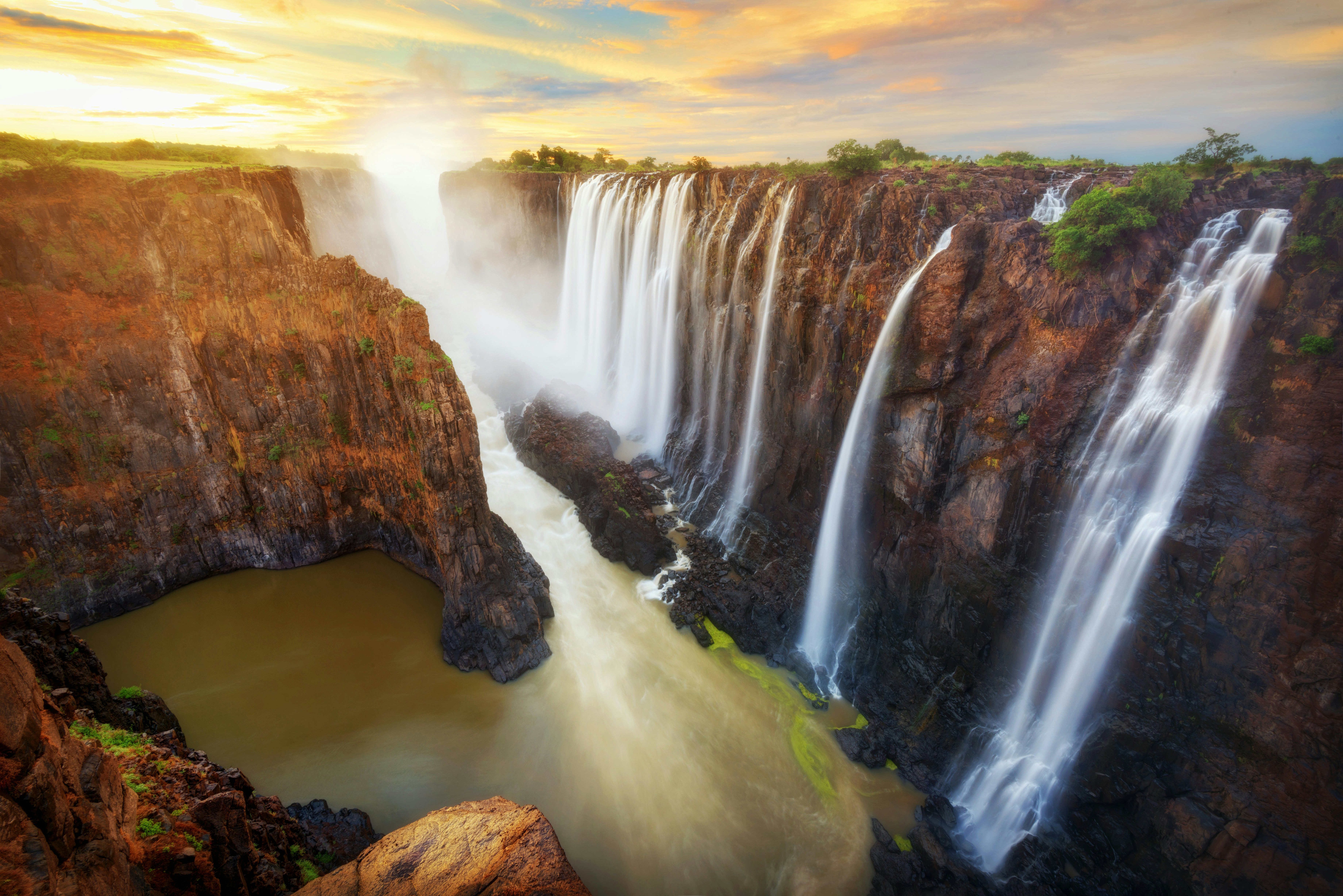
7. See Victoria Falls and the Big Five in Zimbabwe
Zimbabwe is one Africa’s most underrated wildlife destinations. Come here and see thousands of elephants and voracious predators, including lions, cheetahs and wild dogs. Add to the mix the world’s largest curtain of falling water, Victoria Falls, inspiring community conservation projects, excellent camps and lodges and some of the best guides on the continent, and it has all the ingredients for a dream safari.
Hwange is the country’s largest national park, spanning 14,650 sq km (5863 sq miles) of wilderness with teak woodlands, mopane forests and palm-dotted plains home to the prestigious Big Five: lions, buffalo, leopards, elephants and rhinos. Away from the parks, browse community craft markets or take a "Flight of the Angels' helicopter ride to see Victoria Falls. The 1.6km-wide (1-mile) cascades and the mighty Zambezi have plenty to offer adrenaline junkies, including bungee-jumping, zip lining, gorge-swinging and micro-lighting. For a calmer experience, walk the trail along the viewpoints, getting soaked and spying rainbows in the spray amid the roar of the raging water.








